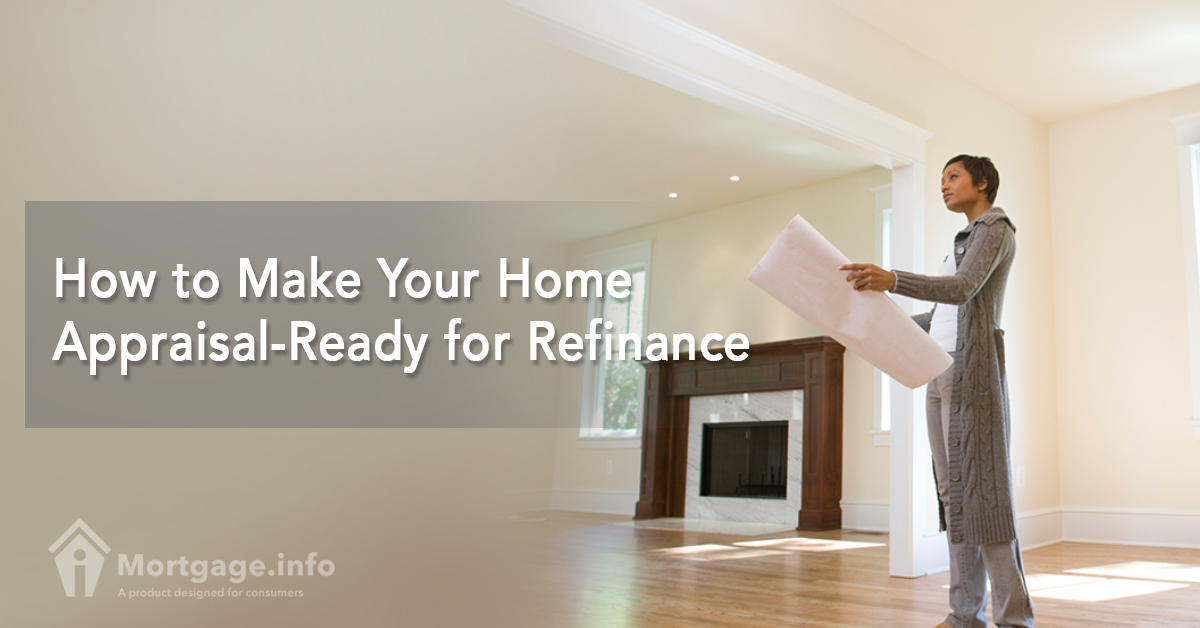Notwithstanding all the myriad reasons to refinance, there’s an important aspect to it that every homeowner should be concerned of: the appraisal. Often considered as the most crucial aspect of refinancing, an appraisal serves as a basis for lenders to let you borrow the amount you want or not. So before refinancing, it’s important that you not only prepare yourself, e.g. credit, debt-to-ratio, etc. but your home as well as to ensure its value aligns with your refinancing goals.
First, what is an appraisal?
An appraisal is required to determine the current market value of your home, based on a number of factors. When you apply for a refinance loan, a lender will schedule a property appraisal to be conducted by a professional real estate appraiser.
The property appraisal has three important stages:
- Inspection: The professional appraiser would first visit your home.
- Comparables: Then, he or she will look at homes in the area that have been sold recently and use these comparable homes in determining your home’s market value.
- Final report: This is the final stage of the appraisal with the appraiser taking into account what he/she has seen at your home vis-a-vis the comparable homes in the neighborhood.
So, what can you do to make your home ready in time for a refinance-required appraisal?
Count on Updates and Improvements.
Somehow, an appraisal for refinancing is the same as when selling a home. Your mindset, after all, is to sell your home before the appraiser’s eyes.
The first signs of wear can be seen in peeling paint or worn wallpaper. Also, broken windows, rusty doorknobs, cracked tiles, outdated furniture, and even quaint prints should have no place in your home as it would make it older than its actual age.
Doorknobs and faucets can be replaced with shiny new ones in good working condition. Broken windows should be fixed and the window panes cleaned, cracked floor tiles be replaced with presentable yet not-too-expensive flooring, and carpets have to be professionally cleaned, too. And yes, repaint the house or at least the more important sections visible to the appraiser.
It’s common consensus that bathrooms and kitchens remain a gold standard in any home appraisal. But a quick search on upgrades would tell you that it doesn’t have to be expensive because some costly updates might just do the opposite especially if they look out of place.
You can replace outdated sinks, repaint cabinets, and laminate kitchen countertops. If you have the budget, make way for more modern, less bulky kitchen appliances.
Curb Appeal It Is.
The appraiser will judge your home per se, see if it is in a good and well-kept condition. But it doesn’t hurt to start with your front yard to make a good impression. Let colorful flowers, de-weeded /flower beds, a newly-mown lawn, and a toy- and clutter-free front yard welcome the appraiser. Don’t forget the paths leading to your backyard, which should also be cleaned and your driveways cleaned and cleared of snow during winter.
Curb appeal shouldn’t be taken for granted, as applying mulch around trees, removing dead trees, and adding lighting can enhance your home’s appearance. If high-cost landscaping is out of the equation, you can do any of these simple upgrades that would improve your home’s exterior as seen on the street.
Clutter Out, Clean Home In.
A clutter-free home can provide a great impression on the appraiser. De-clutter your house inside out. Make time to wash the floorboards, walls, wash decks, and every corner that matters.
While you can’t change the number of rooms in the house, you can certainly make every room in your house, more spacious, lighter, and more well-kept.
Commit to the $500 Rule.
For every small issue like any broken or outdated furnishing in the house can mean $500 off your house’s current value. It’s safer to assume it this way so you’d be prompted to make any repairs that would cost below $500. Doing this can help you recover your cost as reflected in the appraisal.
Do remember to keep tabs of any improvements you’ve made, receipts and all, and show them to the appraiser.
Consult the Neighborhood.
Your home value is weighted vis-a-vis similar homes in your neighborhood. Against this backdrop, it’s important to sell your neighborhood as well. You can ask your neighbors around for any appraisal hurdle and how they were able to overcome it. You can also update the appraiser of any major developments such as a shopping retail store and other conveniences that can add value to your location.
This piece of advice is all the more useful when your appraiser is not familiar with your neighborhood. While it is the lenders who decide who gets to conduct the appraisal, it doesn’t hurt to ask for a local appraiser who knows your area well to get a better appraisal result.

